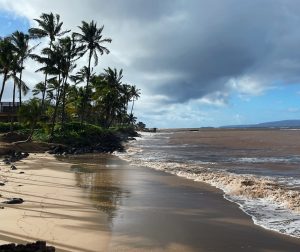Advocates have been pushing the state for years to increase how often it tests popular swimming and surfing beaches for harmful bacteria. Earlier this month, state water quality testing found bacteria levels at Waikiki’s popular and tourist-friendly Kuhio Beach that were high enough to pose health risks to swimmers there. Usually, when such risky bacteria levels are found the Department of Health performs a follow-up test to confirm the result.
Then, it posts signs alerting beachgoers who might go in the water. However, no such follow-up test took place that week at Kuhio — and no signs were posted on the beach — because on May 16 the heavy rains that had recently hit Oahu triggered an island-wide brown water advisory that lasted nearly a week. DOH pauses its water quality testing whenever those advisories go into effect.

That policy, which water quality advocates say creates a troubling information gap for beachgoers, appears to be changing. Officials with the agency’s Clean Water Branch recently told a state lawmaker they’re revising the state’s beach monitoring program so that water quality testing can continue at Hawaii’s most heavily used beaches even when they’re under a brown water advisory. Advocates for more robust testing have lobbied for years to get the change, saying that the current approach to exclude testing in brown water advisories leaves the public without critical water quality data across Hawaii’s beaches.
For nearly a decade, “Hawaii .
















